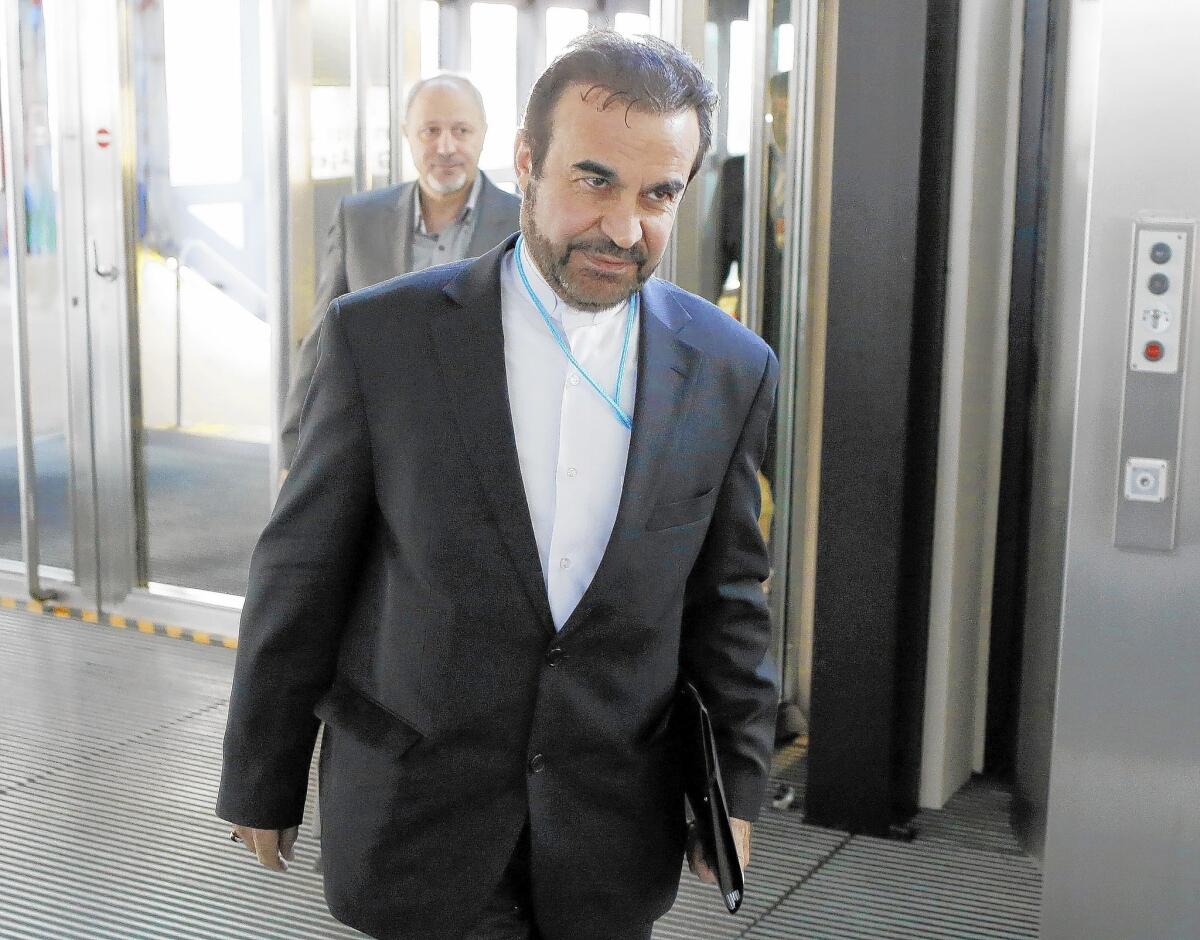IAEA assessment plan presents new hurdle in Iran nuclear talks

- Share via
Reporting from Washington — The United Nations is unlikely to complete its assessment of whether Iran has conducted research on nuclear weapons before the deadline set by six world powers for a deal to curb the country’s nuclear activities, a new complication in the international negotiations.
In its latest quarterly report released Friday, the International Atomic Energy Agency, the U.N.’s nuclear watchdog, said it would conduct a comprehensive “system assessment” of all evidence on the sensitive issue of whether Iran has sought to gain nuclear weapons capability.
The scope of the study probably means that the United States and the five other world powers won’t have the U.N.’s final judgment on Iran’s disputed activities by July 20, when they hope to have completed an agreement with Iran.
Instead, the world powers — the U.S., Britain, China, France, Germany and Russia — will have to determine whether Iran has sought nuclear weapons capability, adding a further challenge to a negotiation that is already difficult, said David Albright, a nuclear weapons specialist who is president of the Institute for Science and International Security.
The exhaustive U.N. approach “does make sense — but the problem is in the timing,” said Albright, a former U.N. weapons inspector. “They’re going to take their sweet time; they don’t understand the need to speed up.”
The six world powers and Iran are trying to negotiate a deal that would ease international economic sanctions on Iran in exchange for restrictions intended to prevent it from gaining nuclear weapons capability.
U.S. officials say they won’t agree to a deal unless Iran answers the IAEA’s questions about its nuclear activities, including any military dimension. Iran insists it has never sought a nuclear weapon and that its nuclear program is strictly for peaceful purposes such as power generation.
A spokeswoman for the National Security Council, Bernadette Meehan, declined to comment on the IAEA report, because it has so far been made available to member countries but not to the public.
She said the administration welcomed Iran’s agreement this week to take additional steps to answer IAEA questions.
“As we have made clear, issues related to the possible military dimensions of Iran’s nuclear program must be resolved as part of any long-term comprehensive solution,” she said in a statement.
The quarterly report indicates that Iran has provided much, but not all, of what the IAEA is seeking and what is required of it under the interim nuclear deal signed in November.
The report says that Iran has for the first time provided the IAEA with technical information to answer questions about the possible military applications of the nuclear program.
On May 20, it says, Iran offered information to support its claims that it had used a sophisticated detonator for a civilian purpose and not to test its possible use to set off a nuclear weapon. The device, a so-called exploding bridge wire, can be used as a nuclear bomb trigger or for non-military purposes.
The agency continues to examine Iran’s contentions about the detonator.
The report says Iran has reduced its stockpile of uranium enriched to 20% purity by more than 80% since January and isn’t producing any new 20%-enriched material. The material is considered a special danger because it can be readily enriched further to be used as bomb fuel.
The IAEA said Iran continues to produce low-enriched uranium (less than 5% purity) as permitted under the November agreement. But Iran hasn’t started converting half the material to an oxide form, as required under the deal, a step that makes converting the uranium to bomb fuel more difficult.
Iran also hasn’t added any major components to its Arak heavy-water reactor, a facility the West fears could be used to build a bomb that uses plutonium as fuel.
The IAEA said it was concerned about satellite evidence showing Iran has made additional efforts to clean up the Parchin military site, a facility IAEA officials worry has been used for weapons research.
The agency said it had limited access to the workshops where Iran builds and stores centrifuges, the machines that produce enriched uranium. Albright said the report indicates that Iran and the agency are discussing access, suggesting the IAEA is not satisfied that it understands what occurs in those buildings.
More to Read
Sign up for Essential California
The most important California stories and recommendations in your inbox every morning.
You may occasionally receive promotional content from the Los Angeles Times.














